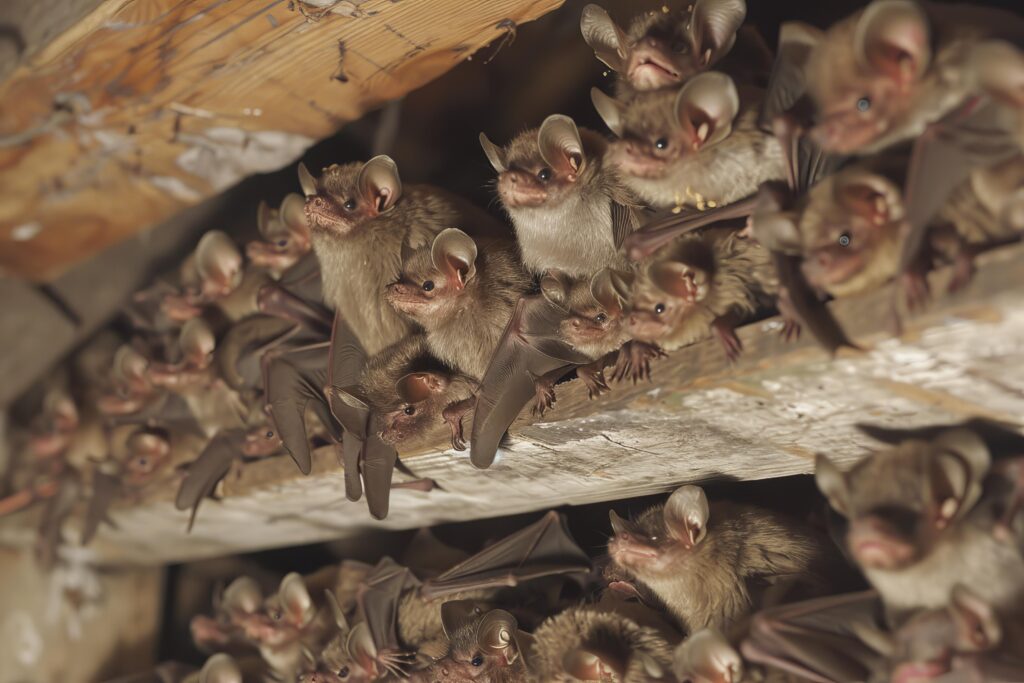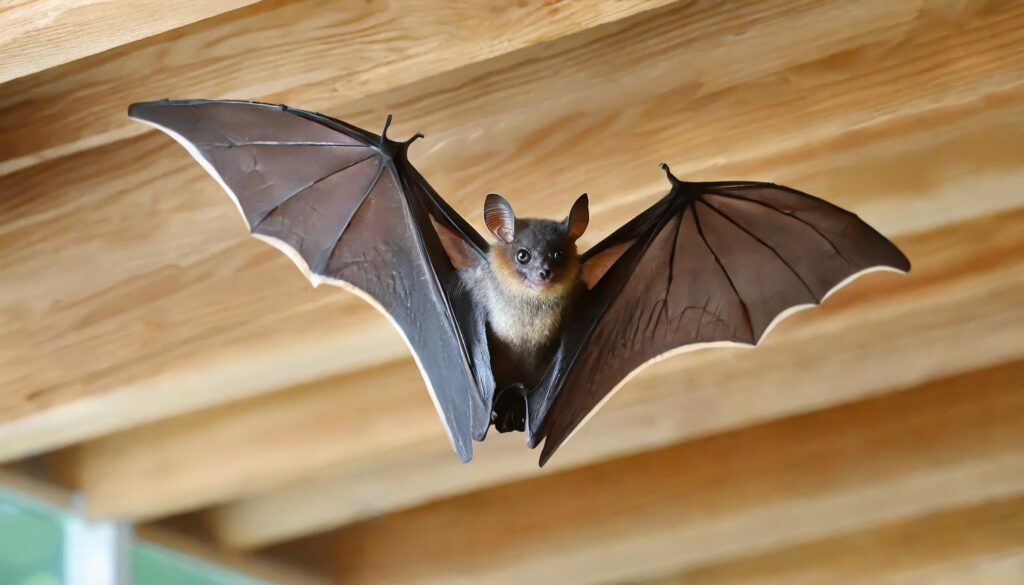As the chill of winter approaches, some uninvited guests might start making themselves at home in your attic—bats. While these nocturnal creatures are incredibly beneficial to the environment, such as helping to control insect populations, they’re not exactly the ideal roommates.
If you find bats taking up residence in your attic during the colder months, it’s essential to know how to safely and humanely remove bats without harming them or your home.
We will walk you through why bats choose attics for winter shelter, the importance of proper mitigation techniques, the legalities of bat exclusion, and how to handle the process without causing harm to the bats.
Why Do Bats Choose Attics in Winter?
Bats are warm-blooded creatures, and during the winter months, they enter a state of hibernation called “torpor” to conserve energy. Attics provide a perfect environment for them—dark, quiet, and often warmer than the outdoor temperature. Since attics mimic natural caves or hollowed trees, they become a go-to for bats seeking refuge from the cold.
However, having bats in your attic can present several issues. Bat droppings, also known as guano, can accumulate and pose health risks due to fungal spores that may lead to respiratory problems. In addition, while bats generally don’t chew through wiring or damage insulation, the presence of a colony can still create an unpleasant situation. So, if you discover bats in your attic, it’s time to take action.
The Importance of Humane Bat Removal
When it comes to removing bats from your attic, humane methods are not just recommended—they’re often legally required. That’s why using exclusion techniques that allow bats to leave your home without causing them harm is crucial.
There are a few key reasons why you should prioritize humane bat mitigation:
- Protecting the Ecosystem: Bats help keep insect populations in check. Without them, pest populations could skyrocket, leading to more issues down the road.
- Legal Requirements: In many places, it’s illegal to harm or kill bats, particularly certain species that are endangered. Failing to comply with these regulations can lead to hefty fines or legal trouble.
- Safety for Your Home: While bats won’t destroy your attic like rodents might, their droppings can create health hazards. Humane removal reduces the risk of contamination while ensuring the bats can continue their vital work in the ecosystem.

Safe Bat Removal Techniques
The first step in safely removing bats from your attic is to understand the bat’s behavior during winter. In the colder months, bats may enter a semi-hibernation state, making it difficult for them to leave or move quickly. Because of this, removing them requires a bit more care and precision. Here are some safe, humane techniques to consider:
1. Bat Exclusion Devices
One of the most effective and humane ways to remove bats from your attic is through the use of exclusion devices. These are one-way doors or flaps that allow bats to exit but prevent them from re-entering. Once the bats leave in search of food, they won’t be able to come back. However, timing is everything. If you attempt exclusion too late in the season when bats are hibernating, they may not leave, or worse, they could die inside your attic. The best time for exclusion is in early fall before the bats fully settle in for the winter.
2. Sealing Entry Points
Once the bats have safely left your attic, you’ll need to seal all potential entry points to prevent them from returning in the future. This includes gaps in your roofing, vents, or any small openings where bats could squeeze through. It’s important to thoroughly inspect your home’s exterior for these entry points—bats can fit through holes as small as half an inch!
3. Avoid Disturbing the Bats
Bats are highly sensitive creatures, and any disturbance during hibernation can be dangerous for them. Avoid trying to force bats out during the dead of winter, as they may not survive the cold once they’re outside. This is why exclusion devices should be installed well before winter, allowing the bats to leave at their own pace.
4. Professional Assistance
While DIY bat removal may seem like an easy task, the truth is that it’s best left to professionals, especially during the winter months when bat exclusion is more complex. Bat mitigation specialists know the best practices for safely removing bats, sealing entry points, and ensuring that your home remains bat-free long-term.
Legal Considerations for Bat Removal
As mentioned earlier, many species of bats are protected under federal and state laws, which means removing or disturbing them improperly can result in serious legal consequences. The Endangered Species Act protects several bat species, and regulations may vary depending on your location.
In most areas, it’s illegal to remove bats during their maternity season, which typically runs from May to August, as this is when bats give birth and care for their young. Winter exclusions can also be tricky due to hibernation. It’s essential to research local regulations or work with a professional bat removal company that understands the legal landscape surrounding bat exclusion.
Post-Exclusion Clean-Up
After you’ve successfully excluded the bats from your attic, there’s still the matter of cleaning up. Bat guano, as we mentioned, can harbor dangerous fungi, so proper clean-up is critical to ensure your home is safe and free from potential health hazards. It’s often best to leave this task to professionals who have the right equipment to clean and disinfect your attic safely.
How Genuine Pest Control Can Help
We understand the importance of humane and safe bat mitigation, especially during the winter months. Our team of experienced professionals is knowledgeable in the legalities surrounding bat exclusion and can ensure that your attic is bat-free without causing harm to these important creatures. We use state-of-the-art exclusion devices, thoroughly inspect your home for entry points, and offer comprehensive clean-up services to restore your attic to its pre-bat state.
If you’ve noticed signs of bats in your attic or simply want to bat-proof your home, give us a call. We’re here to help you keep your home—and the bats—safe this winter.
